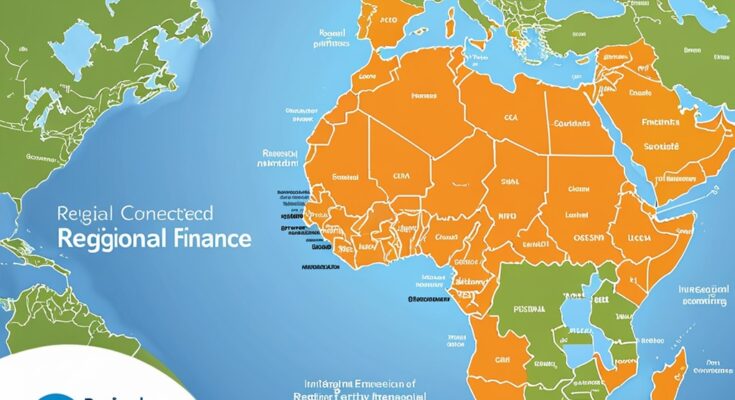Unlocking the Power of Regional Finance: A Guide to Localized Financial Solutions
In an increasingly interconnected world, regional finance is becoming more crucial than ever. Whether you’re an individual seeking financial stability, a small business aiming to expand, or a government entity designing local economic strategies, understanding the role of regional finance can help you tap into significant opportunities. In this comprehensive guide, we’ll explore the ins and outs of regional finance, its importance, and how it can shape local economies, businesses, and individual financial decisions.
What is Regional Finance?
Regional finance refers to the financial services, institutions, and strategies tailored to meet the needs of specific geographic areas or communities. Unlike national or global finance, which often deals with broad economic trends and large-scale transactions, regional finance focuses on localized financial solutions. These solutions can include everything from local investment strategies, financing for small businesses, affordable lending options, and community-specific economic policies.
For example, in a city like Detroit, regional finance could involve supporting local industries such as manufacturing or automotive. In a rural area, it might focus on agricultural investments or affordable loans for local farmers. Essentially, regional finance is about aligning financial services and resources with the unique needs of a particular region.
Why is Regional Finance Important?
Regional finance plays an essential role in shaping the economic landscape of local communities. Here’s why it matters:
- Tailored Financial Solutions
Every region has unique characteristics – its economy, demographics, industries, and challenges. Regional finance allows for customized financial solutions that cater specifically to the local context. Whether it’s providing loans to small businesses in a struggling community or offering financial literacy programs in underserved areas, regional finance adapts to the needs of each location. - Supporting Local Economies
By directing investments and financial resources toward local businesses, regional finance helps stimulate growth within a community. It empowers businesses to scale, creates jobs, and boosts economic development at a grassroots level. This is crucial, especially when national economies may overlook smaller regions or specific industries. - Promoting Financial Inclusion
One of the main benefits of regional finance is its potential to promote financial inclusion. Many areas, especially rural or economically disadvantaged regions, are underserved by traditional financial institutions. By focusing on these areas, regional finance can provide access to credit, savings programs, and financial education for people who might otherwise be excluded from mainstream financial systems. - Risk Mitigation and Stability
When financial resources are distributed and invested regionally, it reduces the risk of market shocks that could affect a single sector or geographic area. By promoting diversified investments within specific regions, the economy becomes more resilient to national or global economic fluctuations.
How Does Regional Finance Work?
Regional finance works through a combination of local financial institutions, government policies, and tailored financial products. Here are the key components of how regional finance operates:
- Local Banks and Credit Unions
Regional financial institutions, such as local banks and credit unions, play a pivotal role in supporting the region’s economy. These institutions typically understand the local market better than national banks, enabling them to offer customized services that meet the community’s specific needs. They offer a range of products such as savings accounts, personal loans, and business financing, often at more competitive rates. - Government Programs and Subsidies
Local governments often play a significant role in regional finance through various subsidies, grants, and low-interest loans aimed at stimulating economic development. Programs designed to support startups, agriculture, or green initiatives, for example, can help businesses in specific regions grow and create jobs. - Private Investment and Venture Capital
For regions with a thriving startup ecosystem, private investors and venture capitalists are crucial players in regional finance. These investors understand the unique opportunities and risks of a particular area, enabling them to provide funding for local entrepreneurs and emerging businesses. In some cases, these investors might focus on regional economic development projects, such as infrastructure improvements or industrial innovations. - Microfinance and Peer-to-Peer Lending
In regions where traditional financial institutions may be less accessible, microfinance organizations and peer-to-peer lending platforms can help individuals and businesses access the capital they need. These alternative financial models are especially effective in rural and developing areas where conventional loans are scarce.
Key Sectors Benefiting from Regional Finance
Regional finance touches on various sectors, providing crucial support that drives local economic growth. Here are some of the key sectors that benefit from it:
1. Small and Medium-Sized Enterprises (SMEs)
SMEs are the backbone of local economies, and regional finance plays a significant role in helping them thrive. By offering specialized loans, grants, and financial advisory services, regional finance helps small businesses overcome financial barriers that might otherwise limit their growth. Local banks and credit unions, in particular, are more likely to understand the challenges and potential of small businesses in their community.
2. Agriculture and Rural Development
For rural areas, regional finance is essential in ensuring that farmers have access to capital for equipment, expansion, and innovation. Agricultural loans, subsidies, and grants help farmers invest in new technologies, diversify crops, and improve their operations, leading to more sustainable growth for the agricultural sector.
3. Real Estate and Infrastructure
Regional finance plays a role in supporting infrastructure development projects, such as roads, bridges, schools, and hospitals. By channeling investments into these projects, regional finance boosts both economic development and quality of life. Real estate markets also benefit from regional finance, with tailored mortgages and loans that support homeownership in specific areas.
4. Green and Sustainable Investments
With an increasing focus on environmental sustainability, regional finance has seen a rise in green investments. This could involve funding renewable energy projects, promoting eco-friendly businesses, or providing incentives for sustainable agricultural practices. Local governments, in particular, are increasingly allocating resources to ensure that regional economic development is aligned with environmental goals.
The Future of Regional Finance
As the world continues to shift towards a more decentralized and localized economic model, the future of regional finance looks promising. Several trends are shaping its evolution:
- Digital Transformation
The rise of fintech and digital banking is transforming regional finance by making financial services more accessible to people in remote or underserved areas. Digital platforms allow individuals and businesses to access loans, savings accounts, and investment opportunities with greater ease, irrespective of location. - Greater Collaboration Between Public and Private Sectors
The future of regional finance will likely involve even more collaboration between governments, financial institutions, and private investors. Public-private partnerships can create more robust financial ecosystems that drive innovation and sustainable economic growth. - Focus on Financial Literacy and Education
As regional finance grows, so too will the need for financial literacy programs. By educating local populations on personal finance, investment strategies, and business planning, regional finance can help individuals and communities make better financial decisions and secure their futures.
Conclusion
Regional finance is an essential piece of the puzzle in promoting localized economic growth, financial inclusion, and sustainability. Whether you’re an entrepreneur seeking funding, a local government creating policies to foster economic development, or an individual looking for financial advice tailored to your region, understanding regional finance can unlock countless opportunities. By focusing on the unique needs of local communities, regional finance creates a dynamic and resilient financial landscape that benefits everyone.
So, the next time you think about finances, remember: it’s not just about national or global trends—it’s about the people, businesses, and economies that make up the fabric of your region. By leveraging regional finance, you can be part of a movement that empowers local communities and drives sustainable economic growth.




